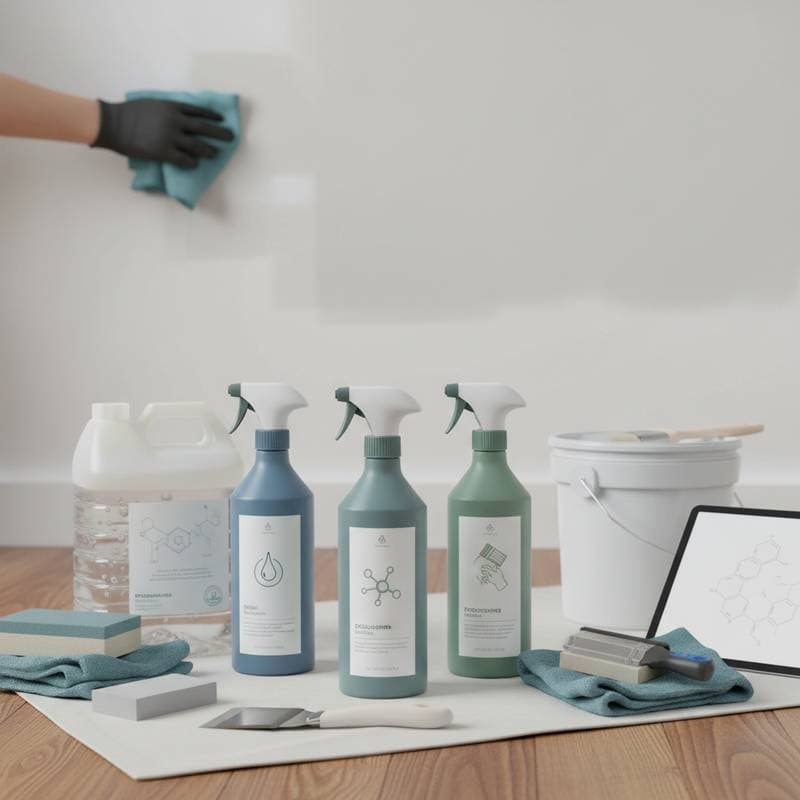Venetian Plaster vs Drywall: Best ROI in 2025 Revealed
Homeowners who compare Venetian plaster and drywall often weigh artistic luxury against practical affordability. Each option delivers a unique appearance, level of durability, and potential return on investment. A clear grasp of cost structures and long-term benefits enables informed decisions that align with style preferences and financial objectives.
Average Cost Overview
Venetian plaster installation typically costs between $10 and $25 per square foot. This range accounts for variations in material quality, surface preparation requirements, and the expertise of the applicators. In contrast, drywall installation ranges from $1.50 to $3.50 per square foot, which includes materials, finishing, and painting. Although Venetian plaster demands a higher initial outlay, its extended lifespan and premium aesthetic frequently yield superior value, particularly for properties where design elements influence resale prices.
Cost Breakdown by Wall Type
| Wall Type | Basic Range | Standard Range | Premium Range | Key Differences |
|---|---|---|---|---|
| Venetian Plaster | $10 - $15 | $16 - $20 | $21 - $25 | Custom tints, polished finishes, artisan application |
| Drywall | $1.50 - $2 | $2.50 - $3 | $3.50 - $4 | Basic joint finish vs. smooth Level 5 texture |
This table highlights how Venetian plaster options escalate with customization, while drywall remains more uniform across levels.
Factors Affecting Overall Cost
1. Material Quality
Venetian plaster consists of lime or marble dust combined with pigments, creating a deep and reflective surface. Premium materials elevate expenses yet improve resistance to wear and visual depth. Drywall panels follow standard specifications, with price fluctuations tied primarily to panel thickness and the degree of finish applied.
2. Labor and Skill Level
Applying Venetian plaster requires experienced artisans who layer the material by hand and buff it to achieve a polished sheen. Labor often comprises over half the total expense due to the time-intensive process. Drywall work proceeds more quickly with general contractors, which results in reduced labor charges.
3. Preparation and Repairs
Surfaces destined for Venetian plaster must achieve flawless smoothness prior to application. Tasks such as repairing cracks, patching holes, and applying primer may add $2 to $5 per square foot. Drywall preparation involves joint taping and sanding, processes that prove simpler and more economical.
Value and Return on Investment
Venetian plaster elevates property worth through its enduring elegance and minimal upkeep needs. The natural composition promotes breathability, which mitigates moisture accumulation and associated structural damage. Properties featuring Venetian plaster attract discerning buyers who value sophisticated details, often commanding premium prices at resale. For instance, in upscale markets, such finishes can increase home values by 5 to 10 percent, outpacing the returns from standard drywall updates. Drywall, while cost-effective, may necessitate more frequent interventions, potentially eroding long-term savings.
Money-Saving Strategies
- Partial Installation: Apply Venetian plaster selectively, such as on a single accent wall, to introduce luxury without committing to an entire space.
- Proper Surface Prep: Invest in thorough repairs and priming upfront to prevent expensive corrections during or after installation.
- Seasonal Scheduling: Arrange projects for off-peak periods, like winter months, when contractors provide competitive rates due to lighter workloads.
- DIY Touch-Ups: Address minor imperfections on Venetian plaster through buffing or re-waxing, tasks that homeowners can handle independently to extend the finish's life.
- Bulk Material Purchases: Source pigments and additives in larger quantities for multi-room projects, which can lower per-square-foot material costs.
These approaches allow homeowners to optimize expenses while preserving the desired outcome.
Planning Your Budget
Develop a comprehensive budget that incorporates material expenses, labor fees, and a contingency fund of 10 to 15 percent for unforeseen issues like hidden repairs or minor design adjustments. Individuals who seek harmony between visual appeal and fiscal prudence may blend finishes strategically, reserving Venetian plaster for high-traffic or focal areas like entryways and dining spaces, while opting for drywall in utilitarian zones such as bedrooms and corridors. This hybrid method maximizes impact without straining resources.
Achieving Lasting Home Value
Selecting between Venetian plaster and drywall involves more than immediate costs; it shapes the home's future marketability. Venetian plaster stands out for its ability to blend artistry with practicality, delivering returns that endure beyond initial investments. Homeowners who prioritize these elements position their properties for sustained appreciation and buyer interest in 2025 and beyond.
Frequently Asked Questions
1. What is the average cost difference between Venetian plaster and drywall?
Venetian plaster ranges from $10 to $25 per square foot, whereas drywall averages $1.50 to $3.50 per square foot. This disparity stems from the superior material standards and the specialized labor essential for plaster application.
2. Which option provides better long-term value?
Venetian plaster yields stronger returns for those who value durability and refinement. It requires infrequent maintenance and boosts property allure, in contrast to drywall, which fits well within constrained budgets or expedited renovation timelines.
3. How can costs be reduced when choosing Venetian plaster?
Confine application to prominent rooms, select mid-tier finish options, and time the project for slower seasons. Such measures trim overall expenditures while upholding essential quality standards.
4. Is it possible to apply Venetian plaster over existing drywall?
Application proves feasible over clean, smooth, and well-primed drywall. A professional evaluation confirms proper adhesion and ensures a seamless result.
5. How frequently does each surface require maintenance?
Venetian plaster benefits from occasional polishing or waxing every few years. Drywall, however, demands repainting or patching more regularly, particularly in high-use zones.
6. What influences labor pricing for Venetian plaster?
Elements such as intricate patterns, elevated wall heights, or substantial preparation work extend labor duration and expenses. Artisans with advanced skills command higher fees, yet their expertise guarantees outcomes that amplify enduring worth.



